Have you ever found yourself curious about the magical atmosphere of Christmas in France? Brace yourself for a journey into the heart of unique and enchanting traditions that make this festive season in France truly extraordinary. From the tantalizing aroma of culinary delights to the spellbinding allure of decorations, there’s an array of discoveries awaiting you on how the French celebrate this joyous holiday. Join me in this exploration as we unravel fascinating Christmas in France facts that promise to leave you with a warm and festive glow, sparking inspiration and adding a touch of wonder to your holiday spirit.
Christmas in France facts: Customs
1. Marché de Noel Christmas Markets
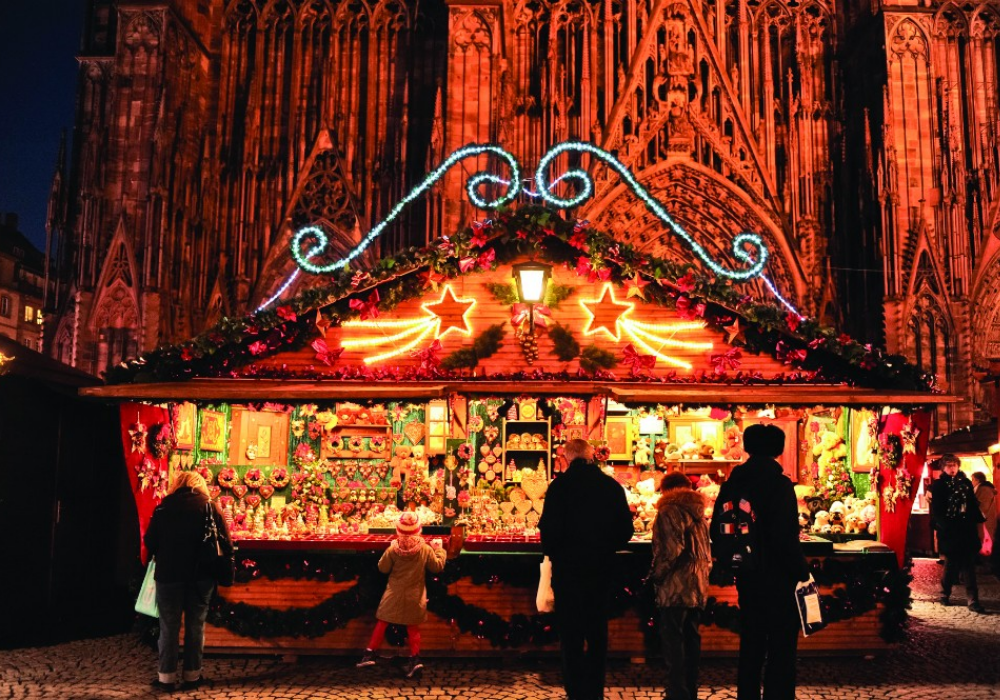
Indulging in the festive allure of a French Christmas market is an experience like no other, immersing you in the enchanting traditions of the season. These vibrant markets, charmingly referred to as “Marchés de Noël,” have deep roots in French history, tracing back to the late Middle Ages.
More than just shopping venues, these markets engage your senses fully. Picture the rich aroma of mulled wine wafting through the air, and the glimmering lights casting a warm glow on artisanal crafts that create a perfect holiday ambiance. Rooted in local culture, these markets offer a distinctive blend of culinary treasures, handcrafted gifts, and that unmistakable touch of French elegance.
Here are the top 5 Christmas markets that promise an extraordinary experience:
- Strasbourg:
- Why it’s special: Known as the “Capital of Christmas,” Strasbourg proudly hosts France’s oldest and most renowned Christmas market.
- What to expect: Wooden chalets adorned with ornaments, Alsatian delights tempting your taste buds, and a majestic Christmas tree that captivates every visitor.
- Colmar:
- Why it’s special: Colmar unfolds a fairy-tale setting with its picturesque half-timbered houses and tranquil canals.
- What to expect: Explore five distinct markets, each with its own character, offering a delightful array ranging from local crafts to gourmet culinary wonders.
- Lille:
- Why it’s special: Lille’s Christmas market is distinguished by its 18-meter-high Ferris wheel dominating the main square.
- What to expect: Immerse yourself in a variety of regional products and Russian crafts, a nod to its twinning with a Russian city.
- Carcassonne:
- Why it’s special: Set within a medieval fortress, Carcassonne’s market provides a unique and historical backdrop.
- What to expect: Discover artisanal crafts, savor regional delicacies, and enjoy a skating rink for some frosty fun.
- Reims:
- Why it’s special: Reims, known as the “Christmas Capital of Champagne,” offers a sparkling and luxurious experience.
- What to expect: Indulge in Champagne tasting, explore gourmet food stalls, and find handcrafted gifts in this festive haven.
2. The Eve of St. Nicholas
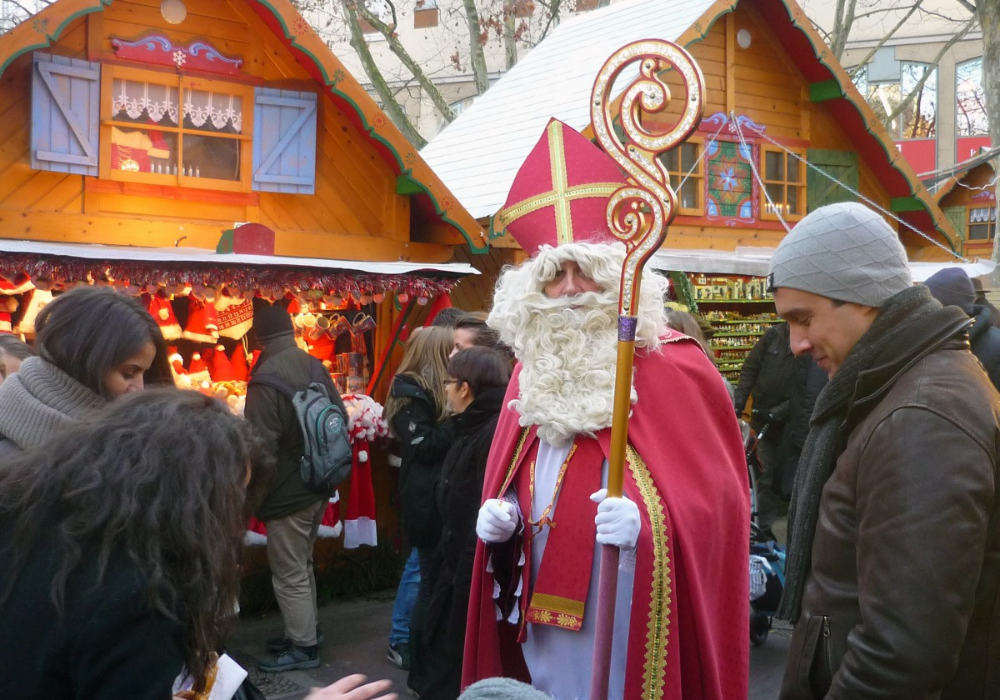
The Eve of St. Nicholas holds a central place in French folklore, particularly in regions like Alsace and Lorraine, where this enchanting celebration takes center stage. This festive event unfolds on the night of December 5th, paving the way for the joyous culmination on St. Nicholas’ Day, celebrated on December 6th.
The tale of St. Nicholas weaves together a tapestry of history and legend, portraying him as the cherished protector of children. On the Eve of St. Nicholas, a delightful tradition ensues as children eagerly place their shoes by the fireplace or window, anticipating treats bestowed by the benevolent saint himself.
In towns like Nancy and Strasbourg, the Eve of St. Nicholas transforms into a grand affair, marked by lively parades, engaging puppet shows, and, of course, the majestic arrival of St. Nicholas. The streets come alive with the spirit of celebration, creating a magical atmosphere for both young and old.
Churches play a significant role in this festive observance, hosting special services that add a spiritual dimension to the occasion. The air resonates with the harmonious melodies of carolers singing hymns dedicated to St. Nicholas, further enhancing the enchantment of this cherished celebration. It’s a time when communities come together to revel in the magic of the season and honor the beloved saint who embodies the spirit of generosity and goodwill.
3. La Crèche – the Nativity scene
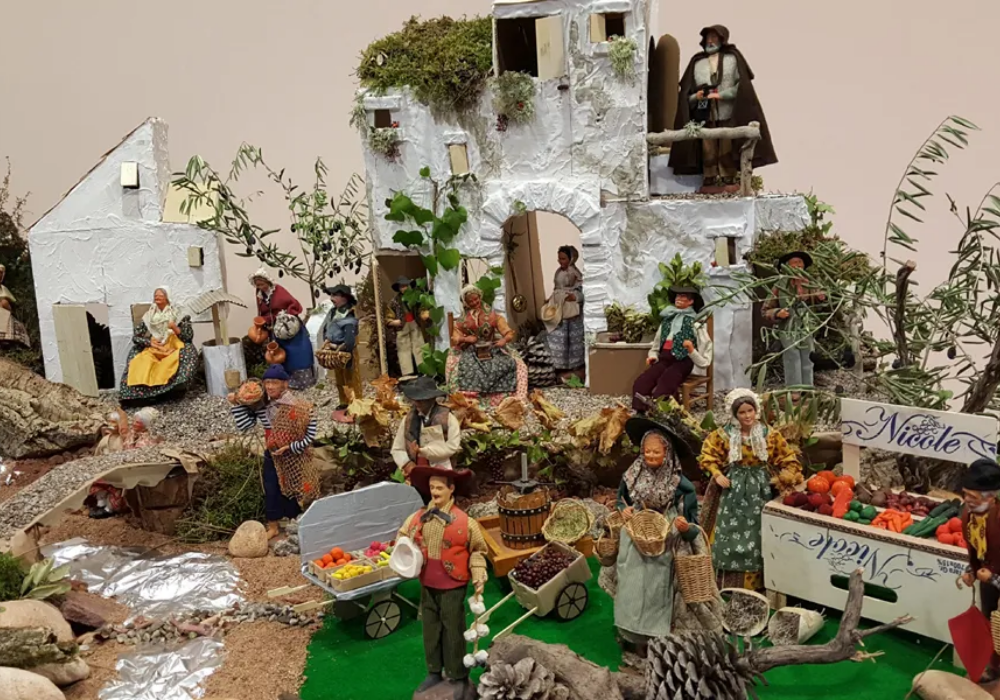
In France, the nativity scene, known as the crèche, stands out for its unique representation of a miniature world that goes beyond the traditional figures of the Holy Family, Wise Men, shepherds, and angels commonly found in nativity scenes around the world.
Unlike the more conventional depictions, the French crèche creates a captivating microcosm that mirrors everyday life. In the quaint village of Castelmoron D’Albert in the Gironde region of South West France, this tradition takes on a distinctive charm. Here, villagers showcase their creativity by crafting crèches displayed in the windows of their homes, using a diverse range of materials. From wood, paper, and stone to imaginative variations incorporating toys, paper, and even eggs, these crèches become intricate works of art.
This heartwarming tradition has been a cherished part of the community for over two decades, offering a delightful spectacle for both residents and visitors. The crèches continue to grace the windows, infusing the village with a festive spirit that extends from Christmas and lasts until Epiphany. Through these intricately crafted scenes, the villagers not only celebrate the joyous occasion of Christmas but also express their creativity and a shared sense of community that has sustained this tradition for years.
4. La Crèche Vivante
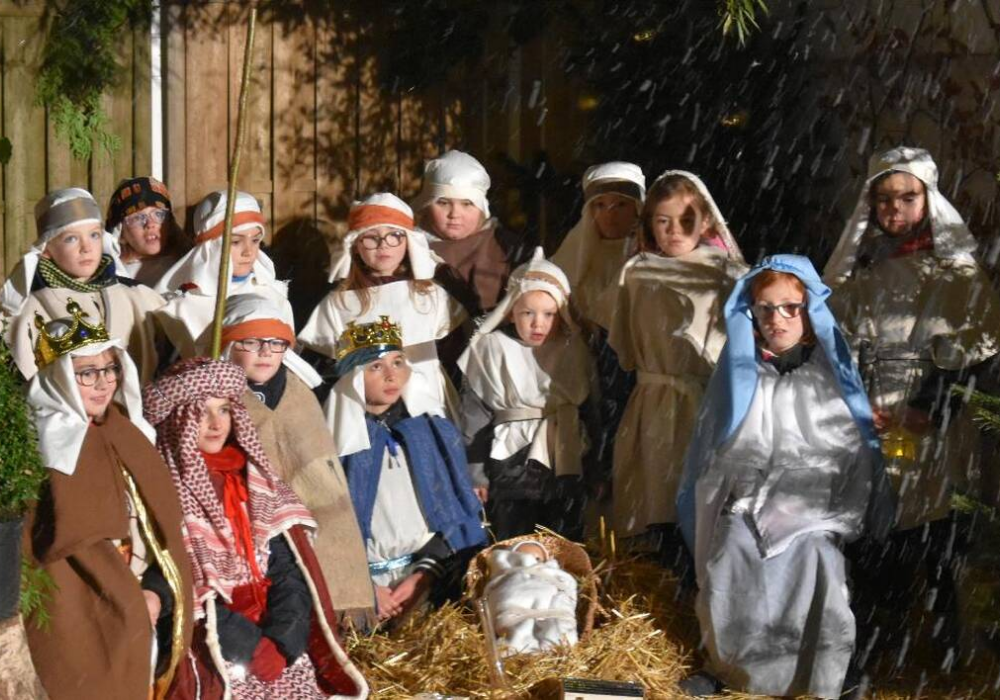
The “Crèche Vivante,” or Living Nativity, elevates the traditional crèche to a captivating life-sized experience, transporting observers into a real-time nativity scene adorned with actual people and, at times, live animals.
This immersive presentation is often a collaborative effort within the community, with local volunteers playing the roles of the Holy Family, shepherds, Wise Men, and various other characters from the village. The setting is carefully arranged to recreate the ambiance of a Bethlehem stable, whether it’s staged in public squares, churches, or open fields.
As spectators step into this living tableau, the atmosphere is imbued with a sense of reverence and awe. The scene typically remains silent, allowing visitors to absorb the poignant beauty of the Christmas story and take a moment for reflection.
In some renditions of the Crèche Vivante, there may be additional elements, such as short plays or narrations, sometimes incorporating local traditions and folklore. This dynamic portrayal of the nativity story not only fosters a deeper connection to the essence of Christmas but also brings communities together in the spirit of celebration and shared cultural heritage.
5. Santons de Noël
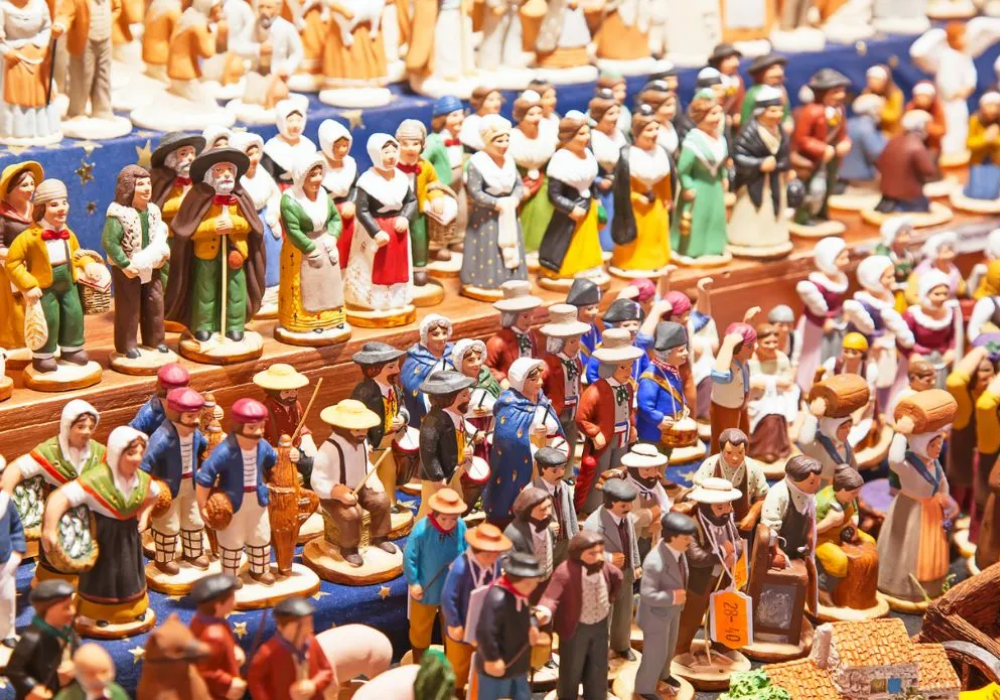
In the realm of nativity scenes, the figurines from Provence known as “Santons” transcend mere representations—they are miniature works of art, each telling a narrative that extends beyond the traditional biblical account of Christmas.
The term “Santons” translates to “little saints,” and these intricately crafted clay figurines are synonymous with the Crèche, or nativity scene, particularly in the region of Provence. Handcrafted with remarkable attention to detail, the art of santon-making is often a cherished skill passed down through generations.
Artisans take great pride in their work, delicately molding and painting each figure to capture not only the physical likeness but also the very essence of the character it represents. What distinguishes the Provençal crèche is the inclusion of everyday villagers. From the baker showcasing his fresh baguettes to the fisherman proudly holding his catch, these figures introduce a slice of Provençal life into the nativity scene.
This unique approach serves as a means to render the Christmas story relatable and deeply rooted in local culture. By incorporating familiar faces and scenes from everyday life, the Provençal crèche not only commemorates the sacred occasion but also celebrates the beauty and richness of the community’s traditions.
Christmas in France facts: Traditions
6. Le Père Noël – Santa Claus
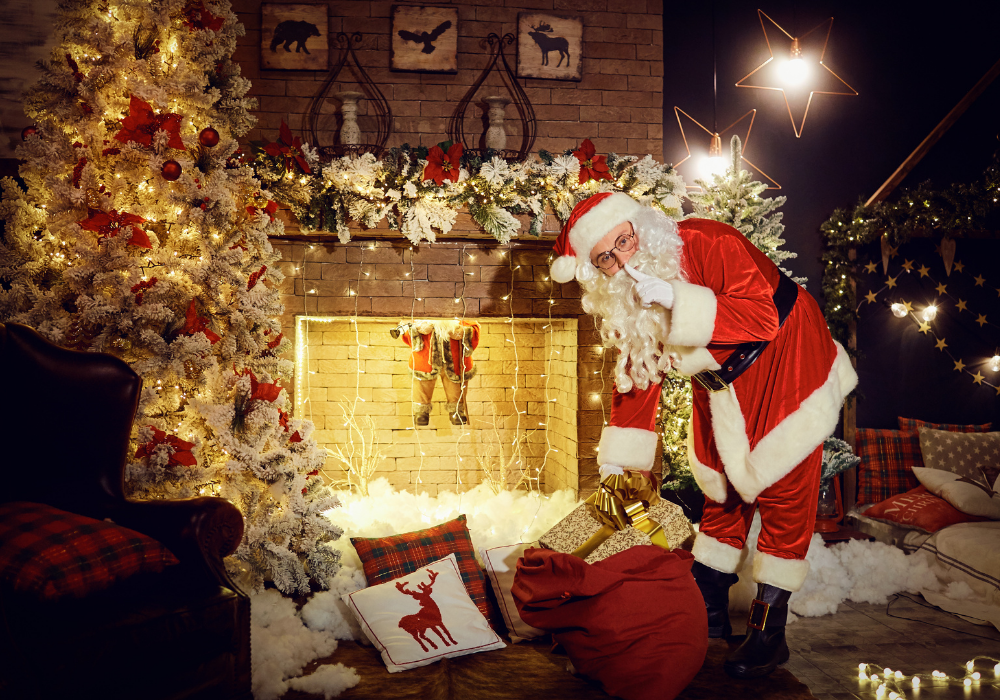
In the enchanting realm of French Christmas traditions, Père Noël takes center stage as the Gallic counterpart to the global figure of Santa Claus. Despite the shared reputation, Père Noël brings his unique set of customs and stories to the festive season in France.
In a departure from the classic sleigh pulled by reindeer, Père Noël embarks on his yuletide journey atop a donkey named Gui. This whimsical touch adds a distinctive and charming flair to the French celebration of Christmas, blending folklore with a touch of Gallic enchantment.
7. Le Père Fouettard
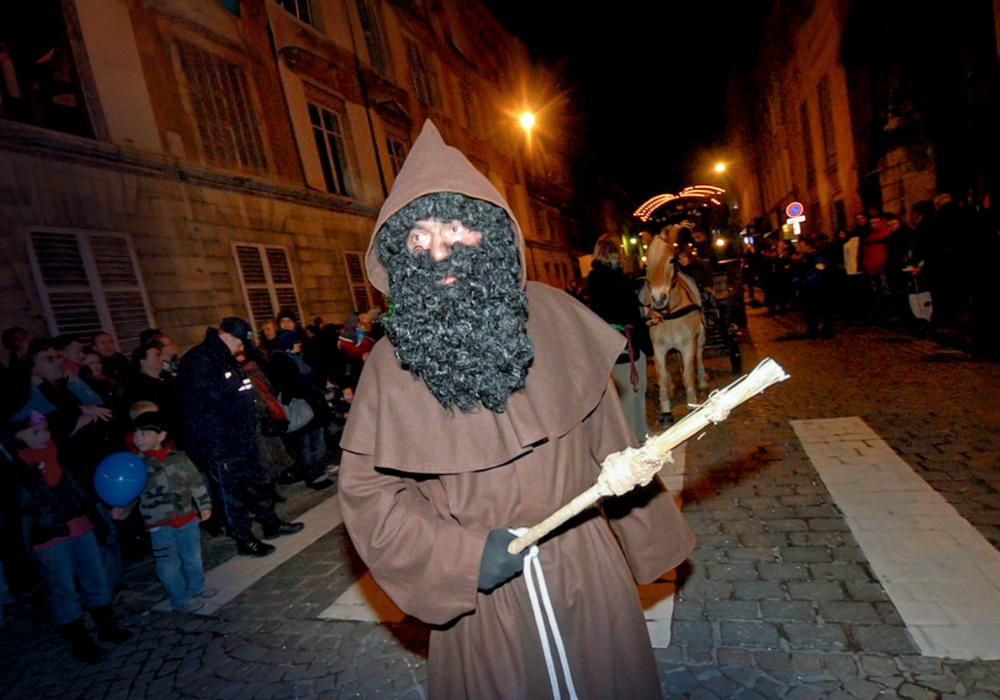
In the intriguing tapestry of French Christmas folklore, Le Père Fouettard emerges as the shadowy counterpart to the benevolent St. Nicholas. Unlike St. Nicholas, who delights in rewarding well-behaved children, Le Père Fouettard is a figure of admonition, tasked with punishing those who have strayed from the path of good behavior.
Clad in dark attire and often wielding a whip or a bundle of sticks, the ominous presence of Le Père Fouettard serves as a cautionary reminder to children about the importance of staying on their best behavior during the festive season. While the legend carries an air of intimidation, modern approaches, such as incentivizing with veggies, offer a more lighthearted strategy to encourage good conduct.
According to folklore, Le Père Fouettard has its origins in a darker narrative—an innkeeper who, in some versions, captured and killed three children. St. Nicholas intervenes, resurrecting the children, and in certain renditions of the tale, Le Père Fouettard undergoes a transformation, repenting and becoming a companion to St. Nicholas.
During Saint Nicholas parades, it is not uncommon to witness the juxtaposition of both characters, embodying the dual facets of reward and admonition in the spirit of Christmas.
8. Sapin de Noël – Christmas Trees
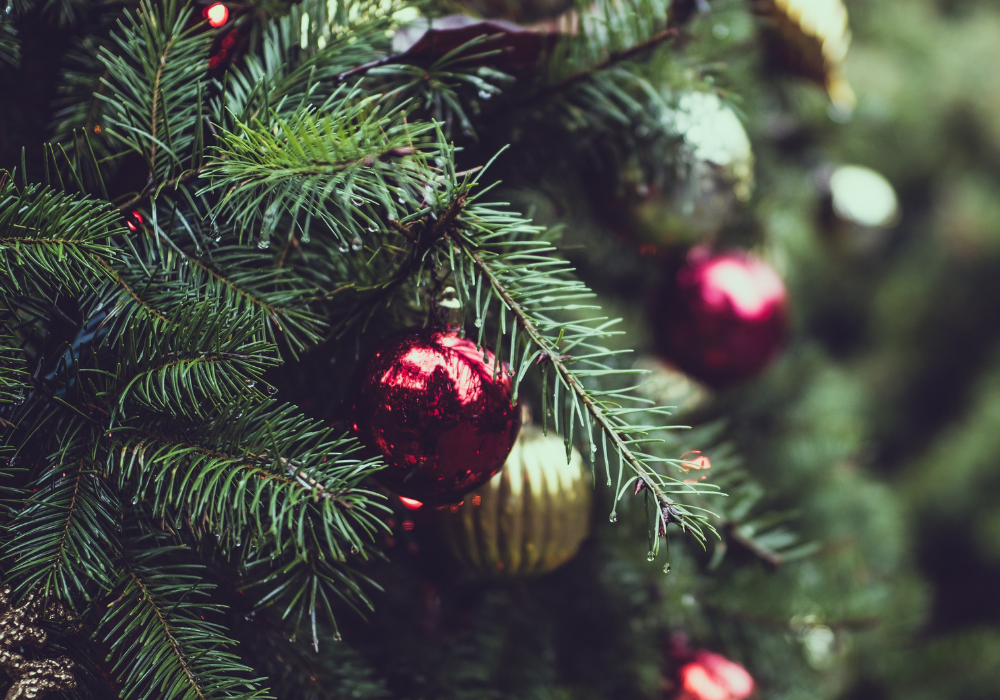
The tradition of adorning a fir tree, now a universal symbol of Christmas, has its roots in the Alsace region dating back to the 16th century. This custom, which originated in a specific locale, has transcended geographical boundaries to become a cherished part of festive celebrations worldwide.
Typically erected at the onset of Advent, families opt for both real and artificial trees, with the latter being particularly prevalent in urban settings. While the standard decorations such as baubles, stars, tinsel, and lights adorn these trees, a touch of uniquely French elements adds regional character. In Provence, intricate paper roses find their place, while mountain regions showcase handcrafted wooden ornaments.
The crowning touch to the Christmas tree is often a star or an angel, symbolizing the Star of Bethlehem or the celestial messenger heralding the birth of Jesus. Across various regions, it’s customary to place small gifts or candies on the tree branches, infusing a delightful element of surprise into the festive tableau.
9. Le Secrétariat du Père Noël
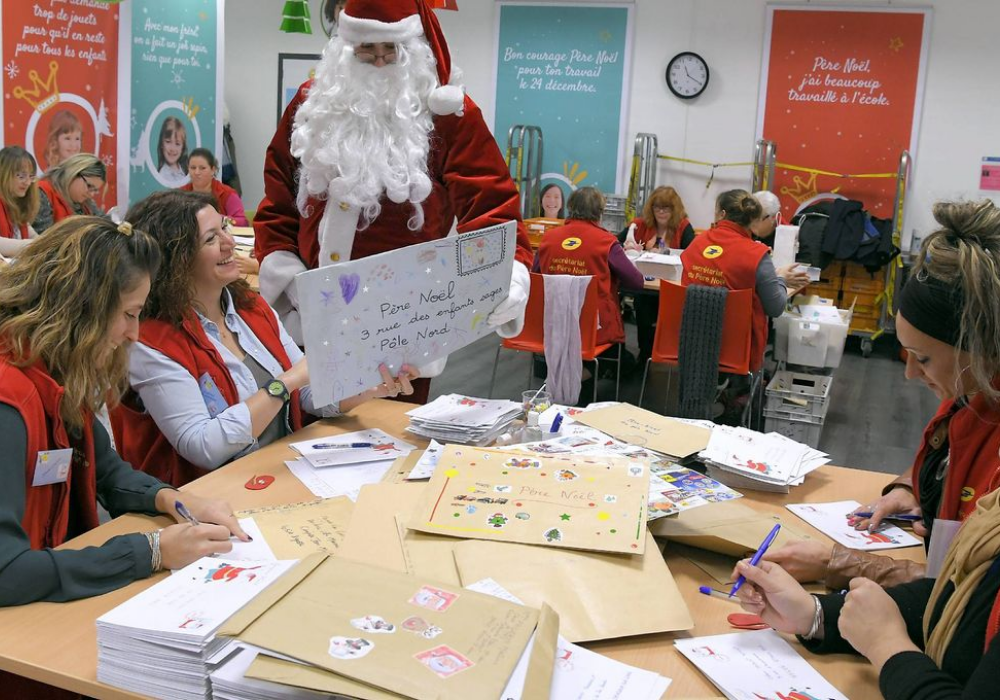
Nestled in the Bordeaux Wine Region, Libourne hosts the enchanting Father Christmas Post Office—a testament to the enduring magic of the holiday season. Established in 1962, the “Secretary of Father Christmas” (Le Secrétariat du Père Noël) plays a pivotal role in maintaining the festive spirit.
At La Poste in Libourne, a dedicated team of 60 secretaries, akin to Santa’s elves, undertakes the heartwarming task of responding to the deluge of Christmas letters pouring in from children across France. Regardless of their origin or how they are addressed, French law mandates a thoughtful response to each letter.
While the mode of communication has evolved from handwritten letters to emails, the commitment to personal replies remains steadfast. The enchanting tradition, now complemented by a digital interactive website, has not only weathered the test of time but has also adapted to the changing landscape of communication.
Even in the age of digital dominance, traditional letters continue to arrive in the thousands, bearing the hopes, dreams, and innocence of young hearts. The Father Christmas Post Office in Libourne proudly upholds its tradition of spreading joy, handling an astonishing 1.3 million-plus letters and emails—an unparalleled testament to the enduring magic of Christmas in France.
10. Les Étrennes – New Year’s Eve Gifts
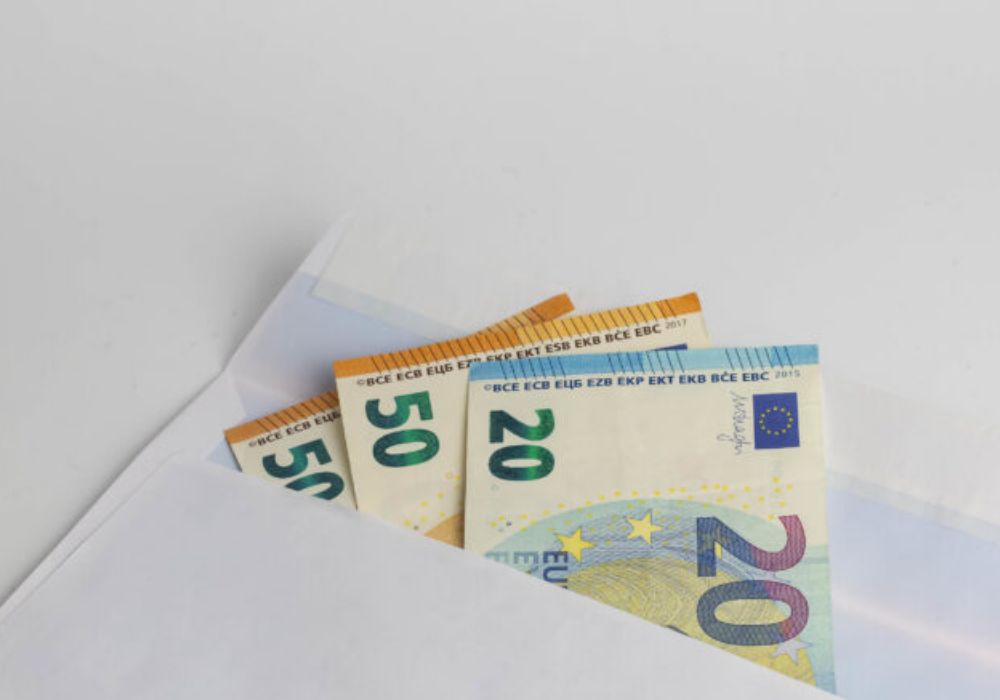
Rooted in history, Les Étrennes stands as a cherished French New Year’s Eve tradition, carrying the echoes of ancient practices into the modern era. Originating from Roman times, the tradition has undergone a fascinating evolution over the centuries.
In its early incarnation, Les Étrennes involved the exchange of branches from sacred trees, symbolizing good luck and blessings for the recipient. This gesture carried profound meaning and reflected the connection to nature and spirituality prevalent in ancient times.
As the years unfolded, the tradition of Les Étrennes transformed and expanded, adapting to the evolving social fabric of French society. In contemporary times, Les Étrennes has embraced a more personalized and practical form of gift-giving. Small presents, often in the form of money or thoughtful tokens of appreciation, are exchanged during the New Year’s celebrations.
A notable aspect of Les Étrennes is the expression of gratitude towards service workers who contribute tirelessly to the community’s well-being. From local postmen and women to firefighters and rubbish collectors, these essential contributors receive these small gifts as a heartfelt thank-you for their dedicated efforts throughout the year.
Les Étrennes, with its rich historical roots and modern expressions of appreciation, encapsulates the enduring spirit of generosity and community that defines the New Year’s celebrations in France.
Christmas in France facts: Food
11. Les Treize Desserts – The 13 Desserts
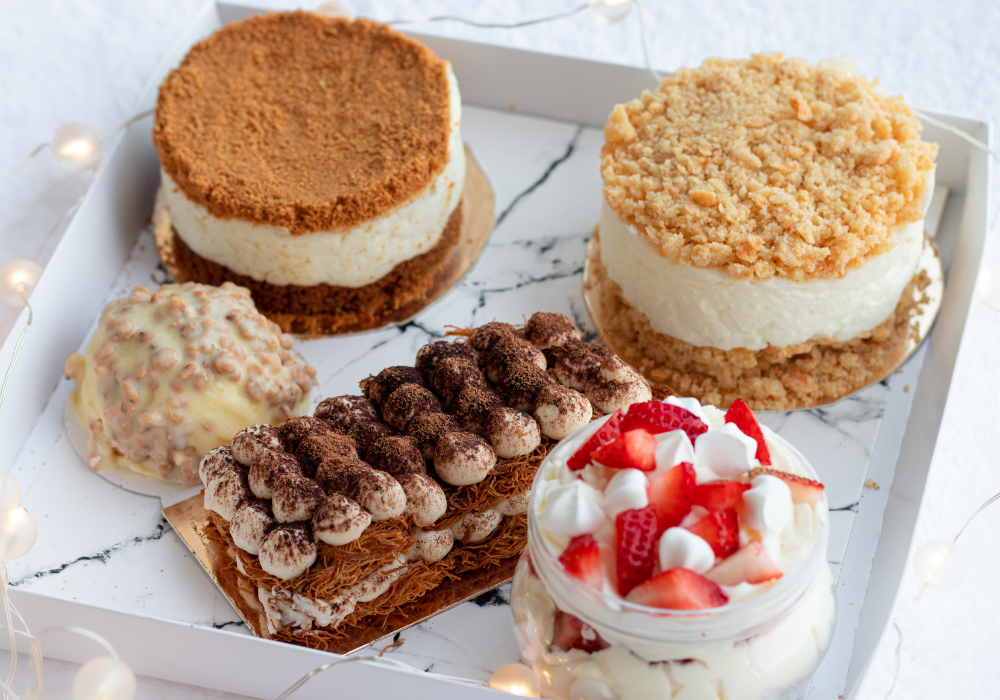
Hailing from the sun-kissed region of Provence, the tradition of serving the “Les Treize Desserts” (The Thirteen Desserts) has become a beloved and visually stunning Christmas custom, especially for those with a penchant for sweets—count me in!
The heart of this tradition lies in the meticulous arrangement of a table adorned with 13 different desserts, each carrying symbolic significance related to Jesus and the 12 Apostles present at the Last Supper. This delectable spread typically graces the table after the Midnight Mass, creating a moment of communal indulgence and celebration.
Witnessing the grandeur of this dessert table for the first time can be a breathtaking experience, particularly for dessert enthusiasts like myself. The array of offerings is diverse, featuring a delightful mix of fruits, nuts, and sweets. Among the essential components are the “mendiants,” representing the four monastic orders—almonds, raisins, figs, and hazelnuts.
In addition to these, the table may boast nougat, quince paste, and an assortment of local treats, creating a feast for both the eyes and the taste buds. One standout delicacy that often takes the spotlight is the “calisson d’Aix,” an almond-paste candy originating from Aix-en-Provence. Personally, I find the calisson d’Aix and the 17th treat, the Bûche de Noël, to be among my favorites, adding a touch of culinary magic to this enchanting Provençal tradition.
12. Bûche de Noël – Christmas Log
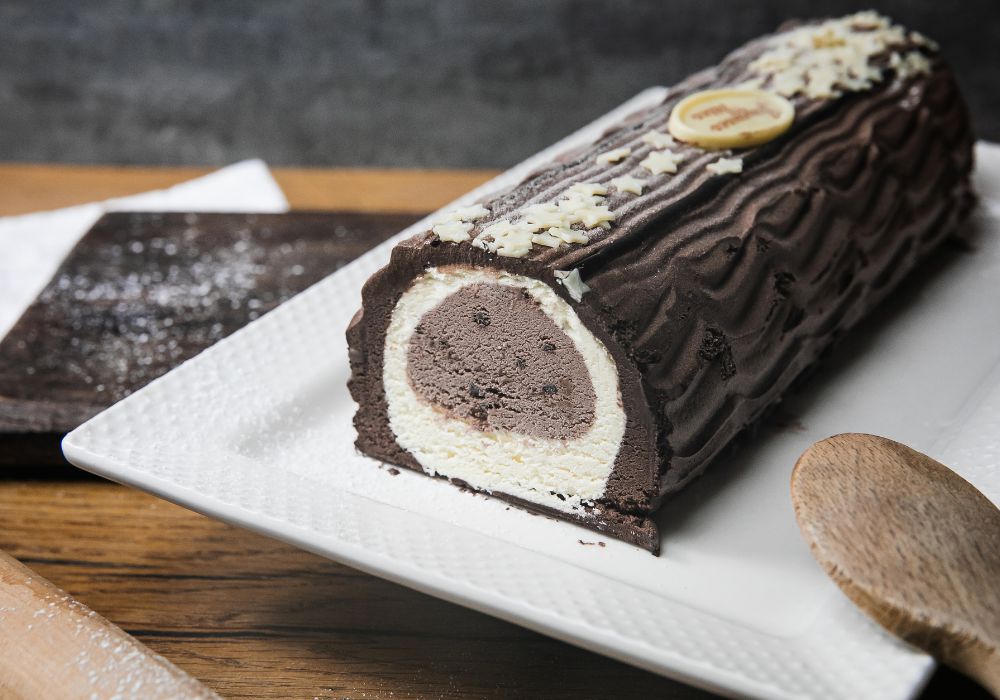
The delightful Bûche de Noël, or as we fondly know it in the UK, the chocolate log! My early encounters with it took me back to those practical cookery lessons in school where we eagerly crafted our own versions.
This delectable treat, enjoyed during Christmas Eve celebrations, is essentially a sponge cake artfully rolled with cream and enveloped in luscious chocolate or coffee-flavored buttercream. The result is a dessert that not only tantalizes the taste buds but also mimics the appearance of a rustic log.
The roots of the Bûche de Noël trace back to the ancient Celtic tradition of burning a real log during the winter solstice, a practice that signified the triumph of light over darkness. As Christianity took hold, the symbolism evolved, and the tradition of consuming a Yule Log found its way to French tables.
For me, the Bûche de Noël is more than just a sweet treat; it’s a cherished part of my French Christmas traditions, connecting me to the rich history and symbolism embedded in this delightful culinary creation. It’s a delicious nod to the past, bringing warmth and sweetness to the festive season.
13. Les Papillotes De Noel
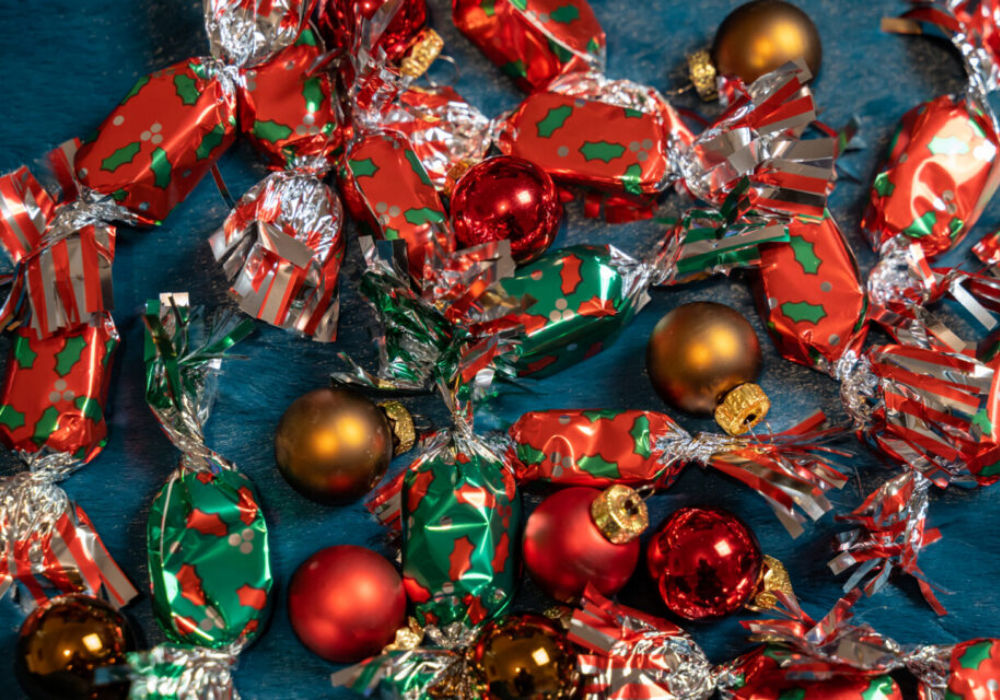
The delightful tradition of Papillotes de Noël, originating from Lyon, is like a sweet symphony for the senses. These treats, filled with chocolate or candied fruit, are carefully wrapped in chocolate paper, often harboring a small note or quote within—a touch of romantic allure that adds an extra layer of charm.
This enchanting tradition has roots that delve into the 18th century, spurred by the romantic gesture of a young assistant chocolatier. Driven by the desire to captivate his sweetheart’s heart, he ingeniously wrapped sweets in love notes and sent them to her. The result? A delightful confectionery creation that not only won over his beloved but also captured the hearts of many across France.
The concept of Papillotes de Noël transcends mere chocolate; it encapsulates a romantic narrative, a sweet whisper of affection and charm. So, as you unwrap these delectable treats, you’re not just savoring chocolate; you’re partaking in a centuries-old love story that continues to sweeten the festive air in France.
14. Vin Chaud – Mulled Wine
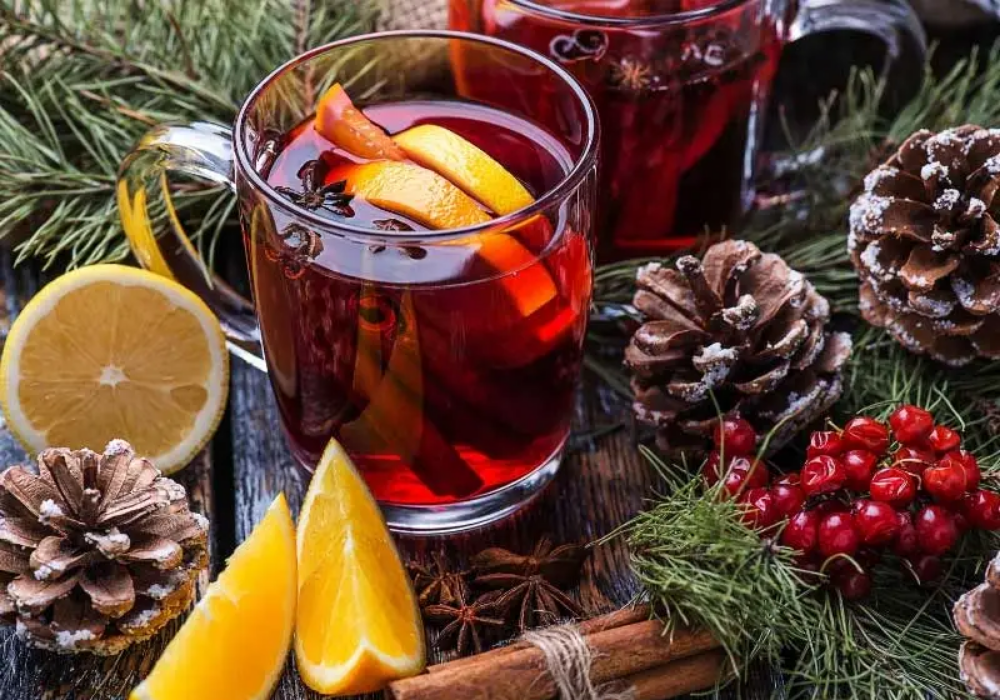
Embarking on a sensory journey at the Christmas markets in France, one can’t help but be drawn to the comforting embrace of Vin Chaud, a festive elixir that fills the air with the warm embrace of aromatic spices like cinnamon and cloves.
The tradition of mulled wine has roots reaching back to ancient times, a practice popularized by the Romans seeking to warm their wine, typically red, during the chill of winter. As you navigate through the bustling markets, the enticing aroma of Vin Chaud beckons, inviting you to experience a delightful fusion of flavors that encapsulates the essence of the season.
For me, one of the cherished moments at these markets involves a delightful pairing—indulging in a piece of gingerbread and dipping it into a cup of Vin Chaud. It’s not just a culinary experience; it’s a festive ritual that adds a touch of sweetness to the winter air, creating memories that linger long after the markets have closed. So, as you sip on this warm ambrosia, you’re not just tasting mulled wine; you’re savoring a tradition that transcends time and warms both heart and soul.
15. La Galette des Rois
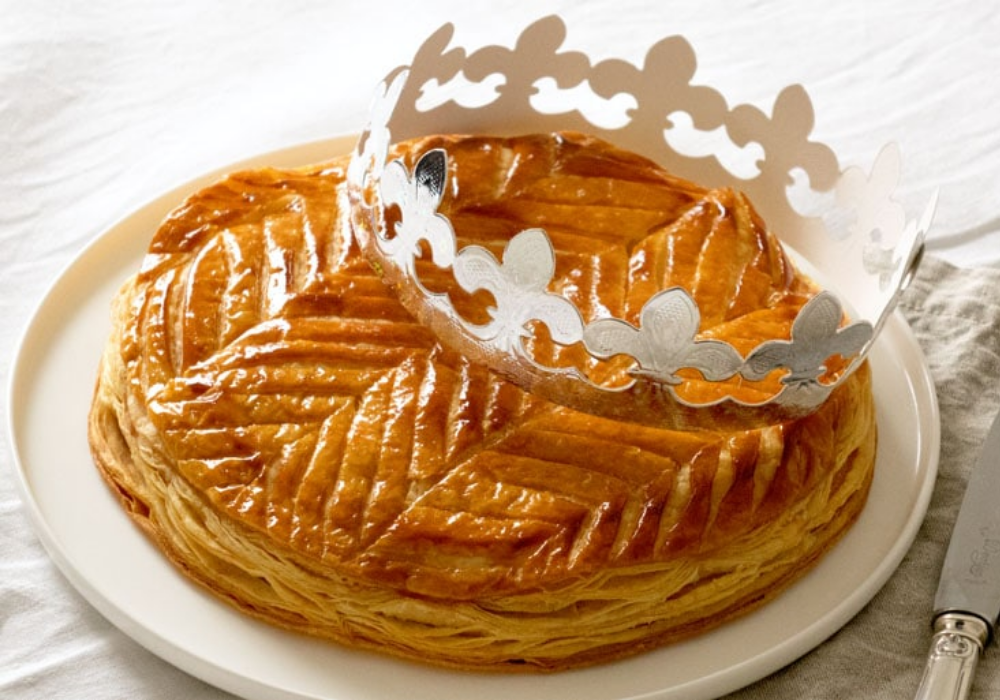
As the Christmas festivities in France reach their grand conclusion on January 6th with Epiphany, a culinary delight takes center stage—La Galette des Rois, the King’s Cake.
Crafted from delicate puff pastry and often adorned with a luscious filling of frangipane, a delectable almond paste, this regal treat encapsulates the spirit of the occasion.
What makes this tradition truly special is the “fève,” a tiny figurine hidden within the layers of the cake. The fortunate individual who discovers this hidden treasure in their slice ascends to the royal status of king or queen for the day, complete with an accompanying paper crown.
While rooted in Christian history, symbolizing the visit of the Three Wise Men to the infant Jesus, the tradition of sharing La Galette des Rois has transcended its origins, capturing the hearts of people across French society. Over the years, the cake has undergone various transformations in form and flavor, but the thrill of uncovering the elusive “fève” remains a constant source of joy, turning a simple dessert into a festive game of regal discovery.
Conclusion
Christmas in France is a time of joy, togetherness, and cherished traditions. Whether it’s savoring a scrumptious feast, opening a delightful surprise from the Advent calendar, or experiencing the magic of Midnight Mass, the French know how to create a truly enchanting celebration. So, this holiday season, why not incorporate some of these charming French traditions into your own festivities? Joyeux Noël et Bonne Année!
















